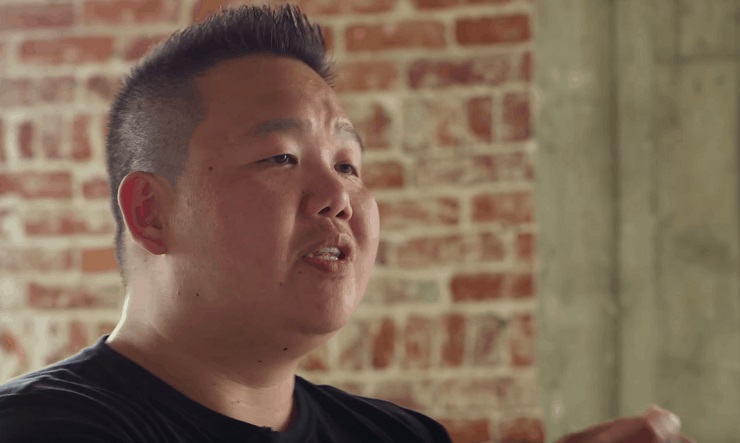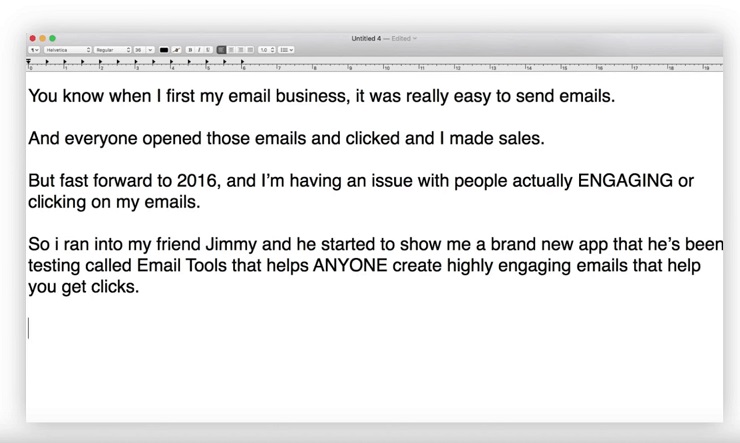When Jimmy Kim started his first business, he couldn’t help but notice how powerful email marketing was. That set him on a mission to understand the secrets of a successful email marketing campaign. What’s the difference, he wondered, between an email that ends up in the junk folder and one that a subscriber looks forward to getting?
Believe it or not, he found the answers in a 1990s TV sitcom about nothing.
That’s right, Jimmy Kim’s email marketing formula for success can be found in Seinfeld.
“Email marketing is all about maximizing your customer base, but at the same time, it’s building a true connection between your subscriber and yourself or your company,” Jimmy says. “What Seinfeld did was create a connection with the audience that was undoable at the time.”
After nearly a decade in the trenches, Jimmy has seen email trends come and go, but he says the number one thing that successful email marketers have mastered is engagement.
“I’m talking about building a loyal tribe that’s going to follow you at each and every step,” He says. “And making sure that they are listening to each and every word and every email that you send.”
Jimmy was so fascinated by what makes email marketing work that he co-founded an email automation company, Sendlane. As of 2019, the company saw a three-year growth of over 732%. Now, Jimmy has partnered with Foundr and is sharing every lesson he’s learned in our new, master-level course called Advanced Email Marketing.
To give you a sneak peek of the kind of lessons you can expect from the course, Jimmy has shared his signature email engagement-boosting technique, “The Seinfeld Experience.” Check out this quick video and then our recap below. You’ll come away with a masterful email marketing skill you can put into action today,
EXCLUSIVE FREE TRAINING: Successful Founders Teach You How to Start and Grow an Online Business
First Things First: Why Seinfeld?
If you grew up in the 1990s, no doubt you’re familiar with the show. But if it was before your time, or it just passed you by, here’s a quick summary:
It was a show about nothing.
No, really. Stand-up comedian Jerry Seinfeld created the show as a dramatized version of his comedy routine. And his comedy routine was all about normal stuff that people do every day, like eating airplane food, or standing in line at a deli, as seen through his unique (and often silly) perspective.
What made the show memorable weren’t the situations the characters found themselves in, but the quirky ways they reacted to their circumstances. As the audience got to know the characters, they started tuning in each week not to see what would happen, but to see what the regular group of characters would do or say.
What does Seinfeld have to do with email marketing?
The success of Seinfeld, according to Jimmy, is in the millions of die-hard fans it earned over the years. When the show came to a close in 1998, people were devastated to see it go.
That’s the way you want your email subscribers to feel. If you stopped sending emails, they’d not only notice, they’d ask for more.
Here are some of the qualities that made Seinfeld such a fan favorite:
Relatability
The main group of Jerry Seinfeld’s friends and neighbors are middle-class New Yorkers you’d run into on the subway. In fact, many fans of Seinfeld talk about which character they’d be if they were on the show. Are you a persnickety, pessimistic Jerry, a short-tempered, anxious George, an oddball Kramer, or a seemingly normal (but goofy on the inside) Elaine?
The lesson for email marketing:
When you have people relating to you on a personal level and imagining themselves in your shoes, that’s a sign that they care and are interested in what you have to say. Don’t be afraid to share a little bit about your own life or something behind the scenes at your business so your subscribers know who you are.
Rapport
Despite situational struggles, the Seinfeld characters worked well together and complemented each other. You could tell that even when they bickered, they liked one another. Establishing a sense of trust is important to a relationship, and the fans of Seinfeld trusted that each week the gang would hang out in Jerry’s living room to talk about nothing.
The lesson for email marketing:
Your subscribers need to trust that you will always deliver on what you promise. If you have invited people to join your list with the promise to educate them or help them achieve a goal like saving money, make sure you’re doing exactly that, over and over again. That way, people know what to expect when they see your emails in their inbox, and if they value what you have to say, they’re more likely to engage.
Distinct Personality
If someone says the name “George Costanza” to a Seinfeld fan, an immediate picture comes to mind of a portly bald fellow. Say “Kramer” and a fan will imagine a tall guy with wild hair bursting through an apartment door. Each of the Seinfeld characters brought a distinctive and memorable look, body language, voice, and personality to the show. That’s why, over 20 years after the last episode aired, the characters are still recognizable.
The lesson for email marketing:
If your emails sound like everyone else’s, your subscribers not only will forget about you, they’ll ignore everything you send. To stand out from the flood of email clutter, it’s important to create emails that look interesting and sound different, even verging on controversial.
A Tale of Two Emails: Putting the Seinfeld Experience Into Practice
Jimmy demonstrates the difference between an easy-to-ignore email and an engaging email.
Example 1: Ignorable
The above email is a quick, generic message asking a subscriber to check out a new product. Even though the email is concise and highlights what the product does, it lacks an emotional reason for the reader to engage by clicking the link.
Example 2: Engaging
The above email tells a quick story about a problem that most email marketers can relate to—the decline of open and click rates. Then he introduces a solution in a relatable way, explaining how his friend showed him a new app that he’s been testing out. The way the product is introduced piques the reader’s curiosity and makes them want to learn more.
Both emails convey the same information. But the second email creates more of an emotional connection through building a relationship.
“In email marketing, relationships are the leading channel of customer retention and the leading reason why people buy from a company,” Jimmy says. “Chances are, your product is available in multiple different places at different competitors. When you create an emotional experience, your customers will want to be a part of whatever it is you’re working on.”
Finally, Jimmy sums up how you put all of these ideas into practice in email marketing. Here are the key steps to remember when using The Seinfeld Experience:
- Establish a human connection
- Tell a story
- Address a problem/conflict
- Provide a solution
- Close the sale
Are you a die-hard fan of a TV show? What elements make you watch week after week, and how can you use those elements in your email marketing? Share your ideas in the comments!
EXCLUSIVE FREE TRAINING: Successful Founders Teach You How to Start and Grow an Online Business





















